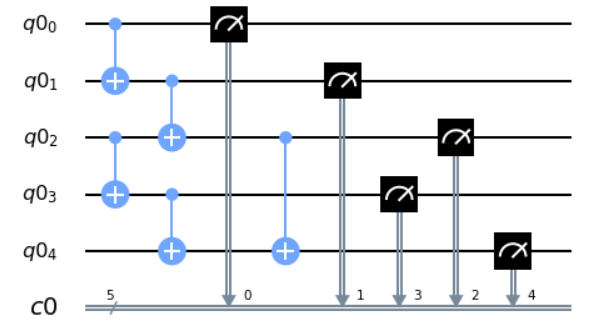I am trying to implement the following circuit 
and my code is
The above circuit has size 5 and depth 3. My question is, how can I run the circuit parallelly. I mean, the gate circuit.cx(qr[0], qr[1]) and gate circuit.cx(qr[2], qr[3]) will be run at the same time and the total running time is dominated by the depth.
I found a related question in Creating and running parallel circuits in Qiskit. However, in that question, the author tries to run several independent experiments rather than run the gates in a circuit parallelly.

